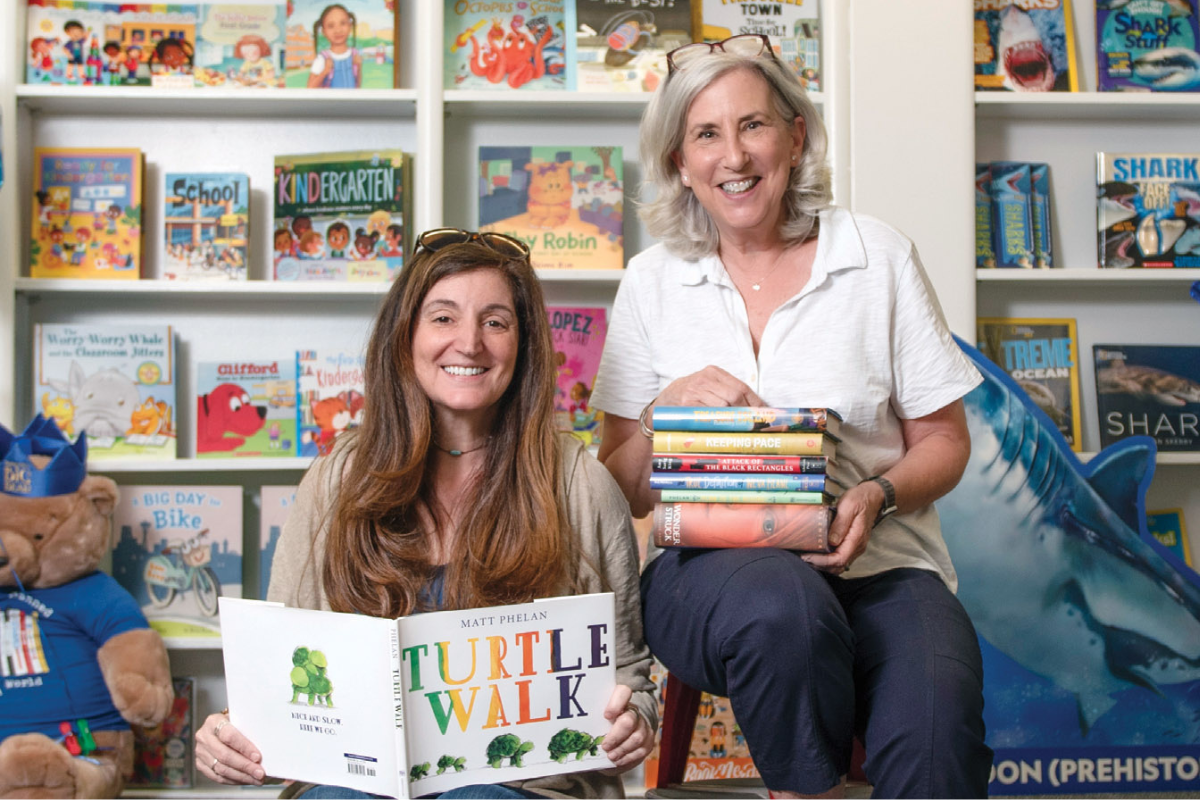Not long after the once-mighty Borders bookstore chain closed its Wynnewood and Rosemont locations in 2011, Cathy Fiebach went to work on her own community-minded concept.
“Amazon was already a force, but I believed I couldn’t be the only one who still valued the experience of browsing, discovering and discussing books in person,” says Fiebach.
Twelve years later, her Main Point Books continues to thrive, moving from Bryn Mawr to Wayne in 2016. And for a while there, it looked like the independents would be a bibliophile’s only option in the region. Then, 18 years after closing, Barnes & Noble made a surprise return to its former Bryn Mawr location this past February. Taking a page from the indie playbook, B&N CEO James Daunt swapped the rigid corporate formula for a more book-focused model that gives local store managers and the community more say in curating selections. The company has even acquired struggling independent shops, renovating them to feel more local. All of which has led to significant expansion and renewed popularity for B&N.
“WE HAVE MORE THAN 75 YEARS OF COMBINED SELLING EXPERIENCE. WE KNOW WHAT WE’RE DOING, AND WE’RE GIVING BACK TO THE COMMUNITY.”
—CHILDREN’S BOOK WORLD’S SALLY DRUCKER
Not coincidentally, the New Atlantic Independent Booksellers Association hosted a 2025 workshop to coach its hundreds of member bookstores from Maryland to New York on what to do when a B&N opens in their town. Fiebach happened to be on the call—and so was Heather Hebert, owner of Children’s Book World in Haverford. “We were talking afterwards about what a great experience it was to talk to everybody and figure out ways to work together,” says Hebert. “And we thought we should do this more intimately with just the Main Line bookstores.”
Main Point and Children’s Book World joined with three other women-owned stores—Narberth Bookshop, nearby Character Development and Ardmore’s Mavy Books—to form the Indie Main Line Coalition. They launched their collaboration with the “Indie Loves Back” event in March, donating portions of sales to five local charities. This summer, they hosted a mini book crawl where participants received a punch card and were encouraged to make a purchase at each store. “We have more than 75 years of combined selling experience,” says Sally Drucker, manager of Children’s Book World. “We know what we’re doing, and we’re giving back to the community.”
“I think sticking together makes us stronger,” adds Fiebach. “There’s room for all of us when we focus on collaboration over competition.”
Even with B&N making every effort to approximate the vibe of a local book shop, it’s still not the same as a real “mom and pop,” where the manager is often the owner—and likely to take note of your purchase habits from day one. It’s certainly the sort of personalized experience that goes well beyond Amazon’s AI-generated recommendations. “We like to think we’re big enough to serve everybody, but small enough to know everybody,” Hebert says.
Though Mavey Books has since taken a step back from the coalition, the four others continue to work together. “A lot of times, customers would come in, and if we didn’t have something on the shelf that they wanted, their reaction would be, ‘I’ll go order it online,’” says Hebert. “Now, we say, ‘Let me see if Narberth Bookshop has that.’ And if they do, that’s great. It’s a sale for them. We’ve kept it in our community.”
While there’s still a level of competition, each shop has a niche. “Each of our stores has a unique personality,” says Ellen Trachtenberg, owner of Narberth Bookshop. “It’s been wonderful to unite with a common goal.”
Not only has the Indie Main Line coalition been good for business—it’s been good for morale. “We’re all women of similar ages, and it’s felt less like competition and more like gaining a group of friends and mentors,” says Fiebach. “We act as sounding boards for each other, whether it’s troubleshooting a point-of-sale system, asking for advice about running events or just offering encouragement. Being able to pick up the phone and talk to someone who really understands the unique challenges of this business has been invaluable.”
Stay tuned for more coalition events. “Our goal is to try to do something every season together,” says Hebert. “I really would like to get to a point that the community starts looking forward to these events and feels like they’re part of this big extended family.”
Related: SHIFT Aims to Create a Low-Waste Economy for the Main Line

